Technology
Okta just launched a free browser extension for Google Chrome today. After installing PassProtect, your browser will compare the passwords you type with Troy HuntHave I Been Pwned.
This extension isn&t necessarily for you, tech savvy readers of TechCrunch. But it could be a great way to warn your neighbor who doesn&t know anything about computers. Maybe their Gmail password has been part of a data breach.
Have I Been Pwned is a big database with all the passwords that have leaked over the years. There have been security breaches at Dropbox, LinkedIn, Tumblr or Adobe services. So chances are you&ve been pwned in the past.
Thatwhy you should be using a password manager, a different password for each online service and two-factor authentication when itpossible. And thatalso why many companies rely on Okta to secure your authentication to a companyintranet.
But the vast majority of users don&t do that.
So the next time you visit your relatives, you could install this extension for basic security checks. The extension uses k-Anonimity to check your password against Huntdatabase securely. Your passwords are never shared with Okta or Have I Been Pwned. The extension is also open source.
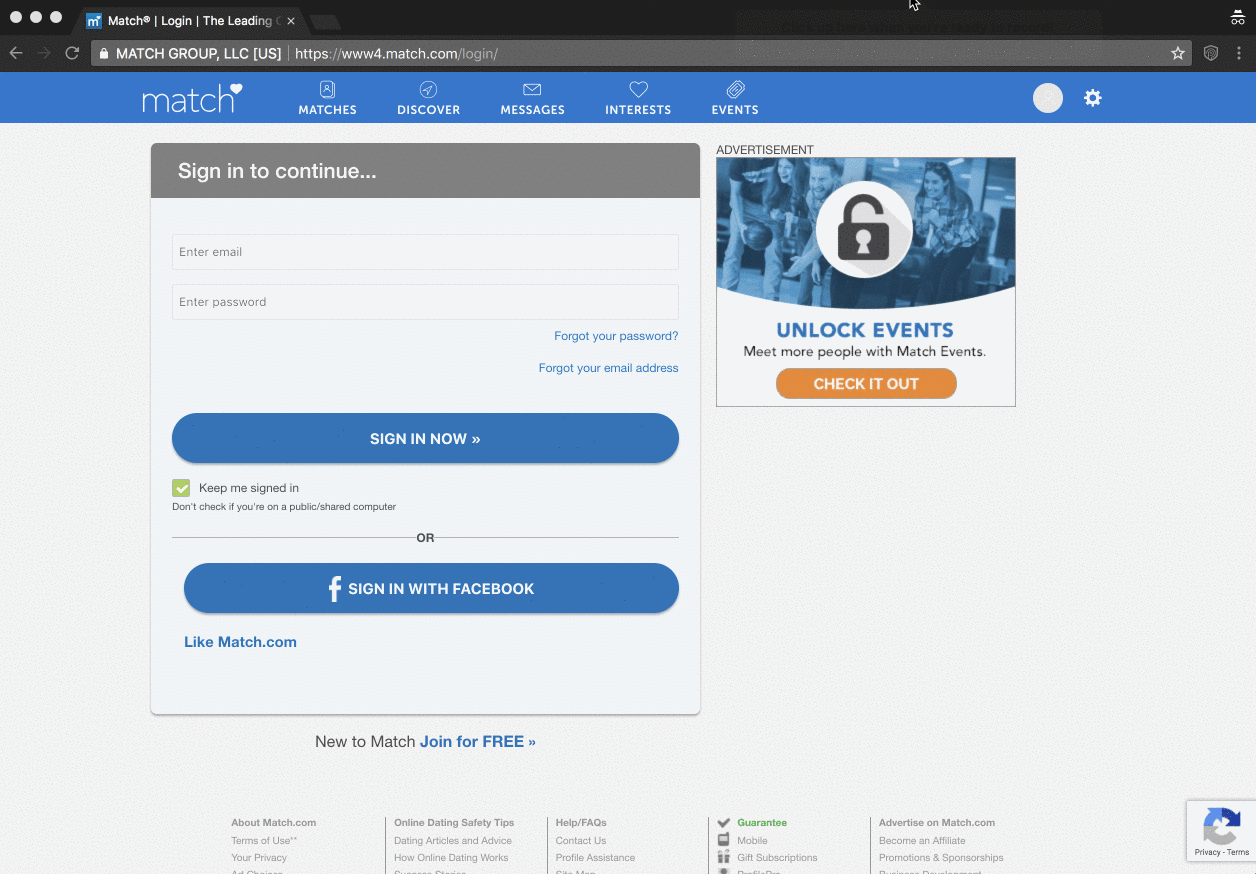
- Details
- Category: Technology
Read more: Okta’s PassProtect checks your passwords with ‘Have I Been Pwned’
Write comment (99 Comments)A U.K.-based startup has come up with a new design for high-end, direct-to-consumer sunglasses that are original, modular, and virtually indestructible. But to get their eyewear in the hands of consumers, they&ll have to compete with some industry giants, including Luxottica Group of Italy, whose brands include Ray-Ban and Oakley among others.
Their company, Wires Glasses, isn&t competing on price. At $380 per pair, its sunglasses cost as much as other designer eyewear. If Wires succeeds, it will largely owe instead to its unusual single-wire design, patented invisible hinge, and, perhaps most important, the narrative it tells about design and sustainability. Indeed, in a day and age where new brands are launched every day, storytelling can mean the difference between barely surviving and thriving, something this team seems to understand.
A new, albeit undisclosed, amount of seed funding from theearly-stage venture firm True Ventures should also help. True has helped grow a number of consumer companies, including Blue Bottle Coffee, the doorbell startup Ring, and the wearables company FitBit. Presumably, its team has lessons from those varied experiences to share.
We talked with Wires cofounder Yair Neuman last week to learn more about how Wires came to be and how they work. Our chat has been edited for length.
TC: You&re a London-based designer. You&ve created visuals for big artists, and ceramic speakers, and projects for Samsung. How did you wind up starting Wires
YN: It started with me needing a pair of glasses when I went on Spanish holiday. I took a piece of soft wire and created a frame and 3D printed lenses in my studio. That only happened because I didn&t want to take Ray-Bans with me. This was a design-y holiday with other designers. But the glasses started to get a lot of attention. I thought it was maybe something I should develop, so when I got back to my studio, I started working on it.
Soon after I met a guy who was born in Zimbamwe, where they often make what they don&t have. They&ll take wires from electrical products and create toys or products or art. And he put together a team inHarare to produce designs for me. We&d send money and clothes and tools, and they&d ship back these frames that we&d combine with 3D printed parts, and suddenly we had these glasses that people liked and we started selling them.
TC: But they are now made in Italy.
YN: We eventually need more precision and know-how, and we get that in Italy. Cadore, Italy, was long said to be the center of eyewear production. In the &80s, there were more than 3,000 factories there. But at the end of the &90s, Luxottica took over [other brands] and moved all the production to China and the area collapsed economically. Still, the workshops and machinery and people with knowledge are all there. So we found a small, family-run business and we make our frames with them, though they have to really rethink the process because our frames are very different.
TC: How so, exactly
YN: The first version of the glasses functioned more as a fashion accessory. They didn&t fold. But it was important to me to build a functional product that they could fold and put away.
I didn&t want to include hinges as we know them — these mechanisms on the sides of our eyes. I wanted to keep the consistency of the wire, to journey from one ear to the other without obstacles. I took a few months to focus only on that, and came up with our protected [intellectual property], which is the invisible hinge. Therebasically a wire and a mechanism inside [the hinge] that allows [the wire] to fold.
TC: Would you potentially license that hinge &technology& to Luxottica
YN: It depends on the offer. If there was the potential to create something interesting while also focusing on the environment, then it might be interesting to explore. But I don&t want to create another object that no one really needs but we&re going to mass produce anyway.
TC: Tell us more about your products, which are modular. What does that mean
YN: Our system is based on the fact that we have one wire, and you can assemble a few different designs around it. This first collection has seven different lense shapes in two [wire] colors — black and white, so if you want to change your look, you don&t need to buy another frame, just a pair of lenses that you pop on the same wire. We have classic round [lenses] but also avante-garde [options] and [lenses that are] easy on the eye — that people don&t really need to show off with.
TC: Do extra lenses come with each pair of glasses
YN: If you add another pair of [lenses], they cost $70.
TC: How did you decide on pricing
YN: It wasn&t a decision so much as the reality of production, plus profits, plus expenses. It costs us the same to make them, so we didn&t go down the route of should we charge more for this or that.
TC: The glasses go on sale today. Can you accommodate a lot of interest from a production standpoint
YN: Normally in this market, you&d have lead time of three to four months. For us, because we 3D print them, we just need three weeks. So we can react very quickly.
TC: How will you keep the lenses &fresh& from a fashion perspective
YN: Before we introduce new Wires, we think therea lot we can do, not just with the shapes but with the types of lenses we make. If you&re a cyclist, for example, and you want to pop in your water-repellent lenses, of you&re skiing and want to pop in lenses that filters the light from the snow . . .
TC: Aren&t the frames a bit delicate for sportswear
YN: They look delicate, but they aren&t at all. Even if you sit on these, the worse thing that happens is we have to disassemble the lenses from the wire; there are no screws or parts to lose. The arms are also highly adjustable so that you can fit them to your head as snugly as you like.
TC: You talk about sustainability in your marketing materials, but you&re shipping glasses from overseas.
YN: We&re a direct-to-consumer business, but we&re still in fashion, and as much as we like the digital world, thatjust not where itat, so we&ll have a pop-up stores in Paris as soon as next month. We&re also planning permanent boutiques in New York and San Francisco to give people the opportunity to go to a shop and see the real thing and not send anything back to us, because it is a lot of carbon.
Also, when we make our glasses, we&re only printing what we need, which is new. Glasses are typically cut from a much bigger sheet of material, with a lot of negative spaces that just become waste. For us, we make sure not to create waste and to use the lowest amount of energy. And when the end comes The metal is all stainless steel. You pop out the lenses. You recycle these with your normal recyclables, so thateasy as well.
Pictured above: model-turned-entrepreneur (and friend of Neuman) Lily Cole.
- Details
- Category: Technology
Earlier this year, Pandora announced its plans to challenge Spotify by taking aim at one of its rivaltop features: personalized playlists. Pandora in March began rolling out dozens of variations of personalized playlists, including those spanning moods, activities, and genres & all powered by its music database, the Music Genome. Today, Pandora says the rollout has completed and all its Premium users will now have access to these new playlists.
The feature is meant to offer Pandorafree users a reason to upgrade to its top-tier paid offering, Pandora Premium. This $9.99 per month service offers on-demand listening, playlist creation, downloads for offline listening, unlimited skips and replays, higher-quality audio and no advertisements.
Premium users can share their personalized playlists with friends, even if they&re on the free tier, by sending a link.
The free user cantemporarily access Premium by watching a video adas a way to test drive the Premium experience, and listen to their friendplaylist. This option, called &Access,& launched in December and has been used by millions.
The company declined to comment on how well this &test drive& strategy has been working to convert free users to paid, saying that itnot sharing metrics and engagement numbers around personalized playlists as the feature hadn&t yet been broadly rolled out. (Only a &select& number had access to the playlists ahead of today).
The playlists themselves are created by a combination of data from PandoraMusic Genome and machine learning models that understand what sort of music you like. But Pandora also employs human curators to perfect the lists and update them, as needed.
At launch, the service was capable of offering over 60 personalized playlists, like those for &focus,& &energy,& &rainy days& or genre-based ones, like &pop& or &hip hop.& But users won&t necessarily get all 60 & they&ll only get those that Pandora thinks makes sense for the individual based on the userlistening habits.
Pandora says that, during this staged rollout phase, it was creating up to four new playlists for each user per week, and this process would continue until it &maxed out& each userplaylist categories. This &max& is not a flat number, but varies by user. For example, someone who listens to a lot of different types of music may continue getting new playlists for weeks.
Now that the feature is live, Pandora plans to release more categories, including new soundtrack themes, in the months ahead.
&This is the beginning of a whole suite of themed playlists that we will automatically build and tailor to each Premium user. In the coming months, we&ll be rolling out more even more themes for you to unlock,& writesChris Phillips, Pandora CPO, in a blog post announcing the news.
To find the new playlists, visit the &Featured Playlists& section of &Browse& in the Pandora mobile app.
- Details
- Category: Technology
Read more: Pandora’s personalized playlists go live for all Premium users
Write comment (90 Comments)Editornote: This post was done in partnership with Wirecutter. When readers choose to buy Wirecutterindependently chosen editorial picks, Wirecutter and TechCrunch earn affiliate commissions.
New and serious gamers know that it takes a significant amount of time sharpen skills, and to strategize ways to capture high scores. Staying ahead of player 2 is easier when you have the right gaming peripherals.
A monitor with a crisp display, a responsive gaming mouse, a comfortable headset—or all of these items combined—are what you need to take your PC gaming experience to the next level. We can&t promise that new equipment will keep you at the top of the board, but the best gear with accommodating features is essential to a great setup, and to helping you try.
G-Sync Monitor: Asus ROG Swift PG279Q
For the best option to pair with a Nvidia graphics card, we recommend the Asus ROG Swift PG279Q (Amazon) G-Sync gaming monitor. At 27 inches itbig enough to give off an immersive feeling, but not so big that visuals seem overwhelming. It only works over displayport and has two connection options (HDMI 1.4 and DisplayPort 1.2a). You&ll still be able to plug in peripherals like a keyboard or phone via its built-in USB 3.0 port. We tested it with a variety of games and it performed well with them all. This monitorluminance range is also pretty wide so it&ll display images nicely if placed in dim or bright areas.
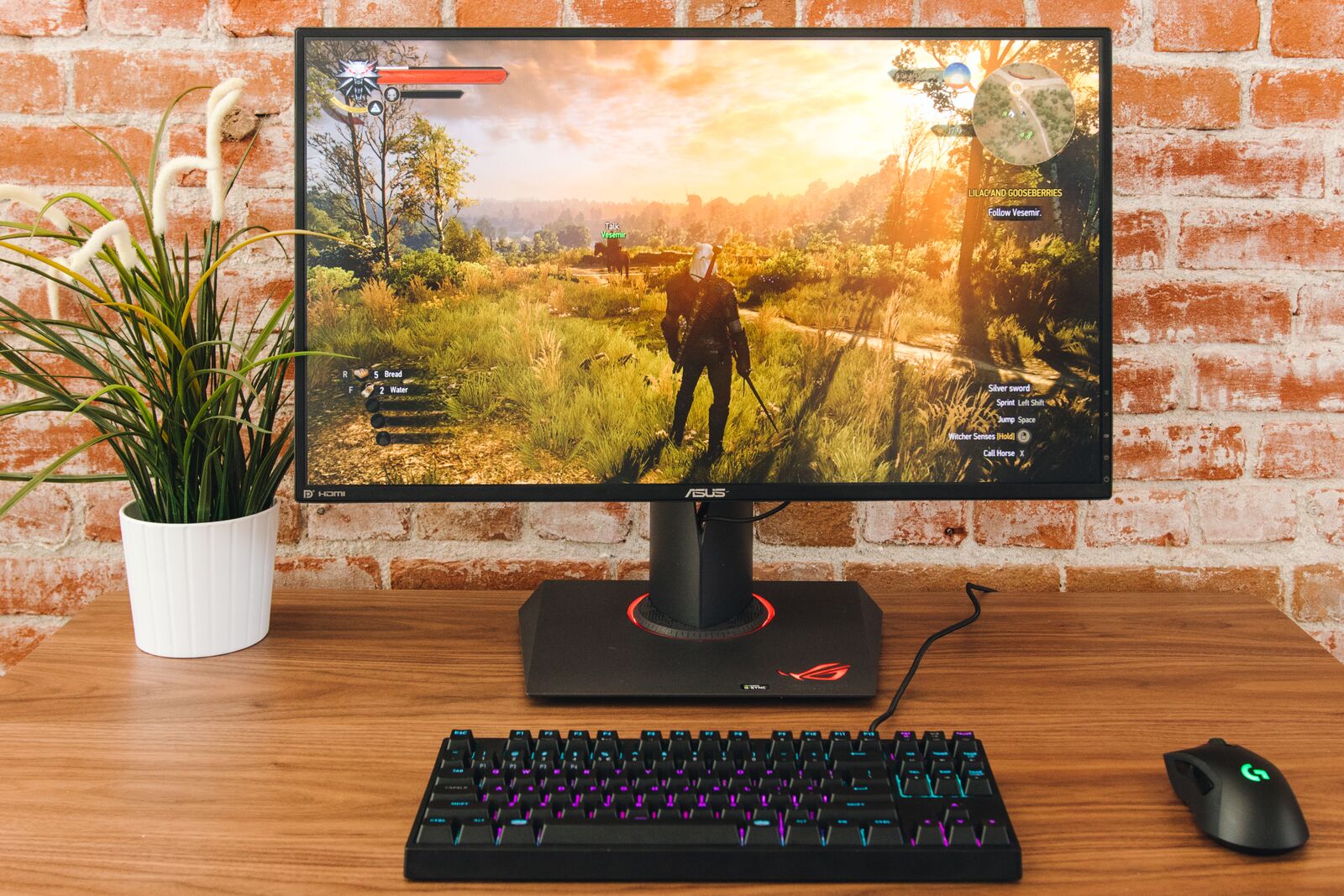
Photo: Rozette Rago
FreeSync monitor: Asus MG279Q
The Asus MG279Q (Amazon), our top FreeSync monitor pick, is best for those who use an AMD graphics card. A gaming console and computer work well with this 27-inch monitor as itpacked with connection options (one Mini DisplayPort 1.2 connection, two HDMI 1.4 connections and one DisplayPort 1.2).
We like its adjustability and that you can detach it completely from its stand. It can be mounted on a monitor arm to better accommodate different setups. Though it supports FreeSync between 35 Hz and 90 Hz, it has 1440p resolution and a standard refresh rate of 144 Hz for clear, high-quality visuals.
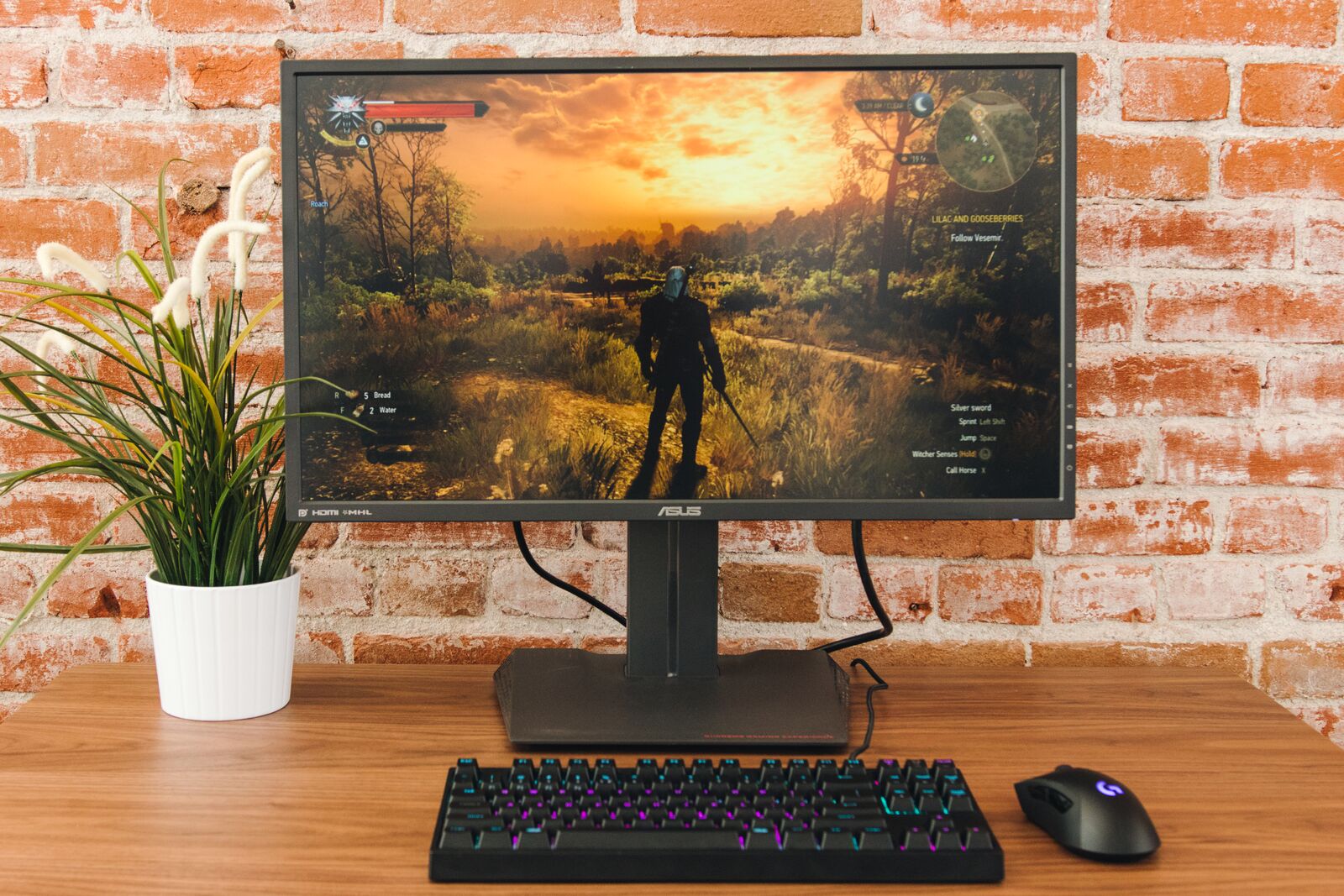
Photo: Rozette Rago
Headset: Kingston HyperX Cloud
The excitement that comes along with gaming is largely attached to being able to clearly hear the action. A gaming headset that can offer all-day comfort, a high-quality microphone and full sound is a headset you want to go with.
Our top pick, the Kingston HyperX Cloud (Amazon), offers all of these features and after about 30 months of testing, itheld up well. It&ll still look as good as new after being tossed around, but more importantly, its headband and ear cups don&t feel heavy or constricting. You&ll be able to play online with teammates without hearing an overlap between headset and microphone audio. Italso a decent headset for watching movies and listening to music.
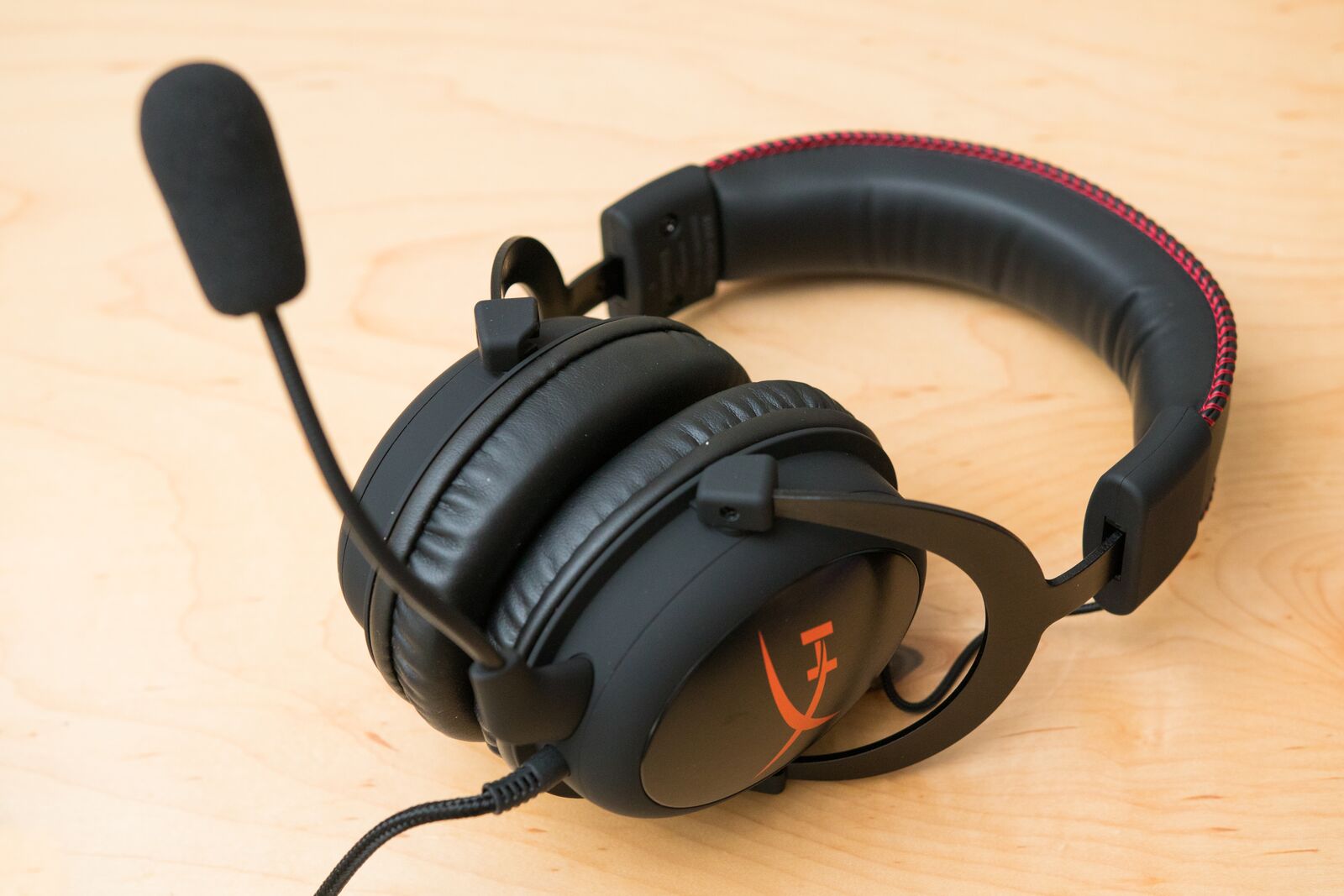
Photo: Michael Hession
Mouse: Razer DeathAdder Elite
The Razer DeathAdder Elite, our top gaming mouse pick, has a design thatideal for hands of all sizes. We like that it has textured grip, and that you&re able to get comfortable with preferred settings using its customizable buttons and scroll wheel. It isn&t clunky and you won&t press the wrong buttons, as they&re intuitive and well-placed.
Aside from its RGB lights that change color, it doesn&t look much different from a mouse you&d find at a work desk. It comes with RazerSynapse software (which works on Mac and Windows), and it has an accurate, exclusive Pixart PMW3389 sensor that tracks without issue.
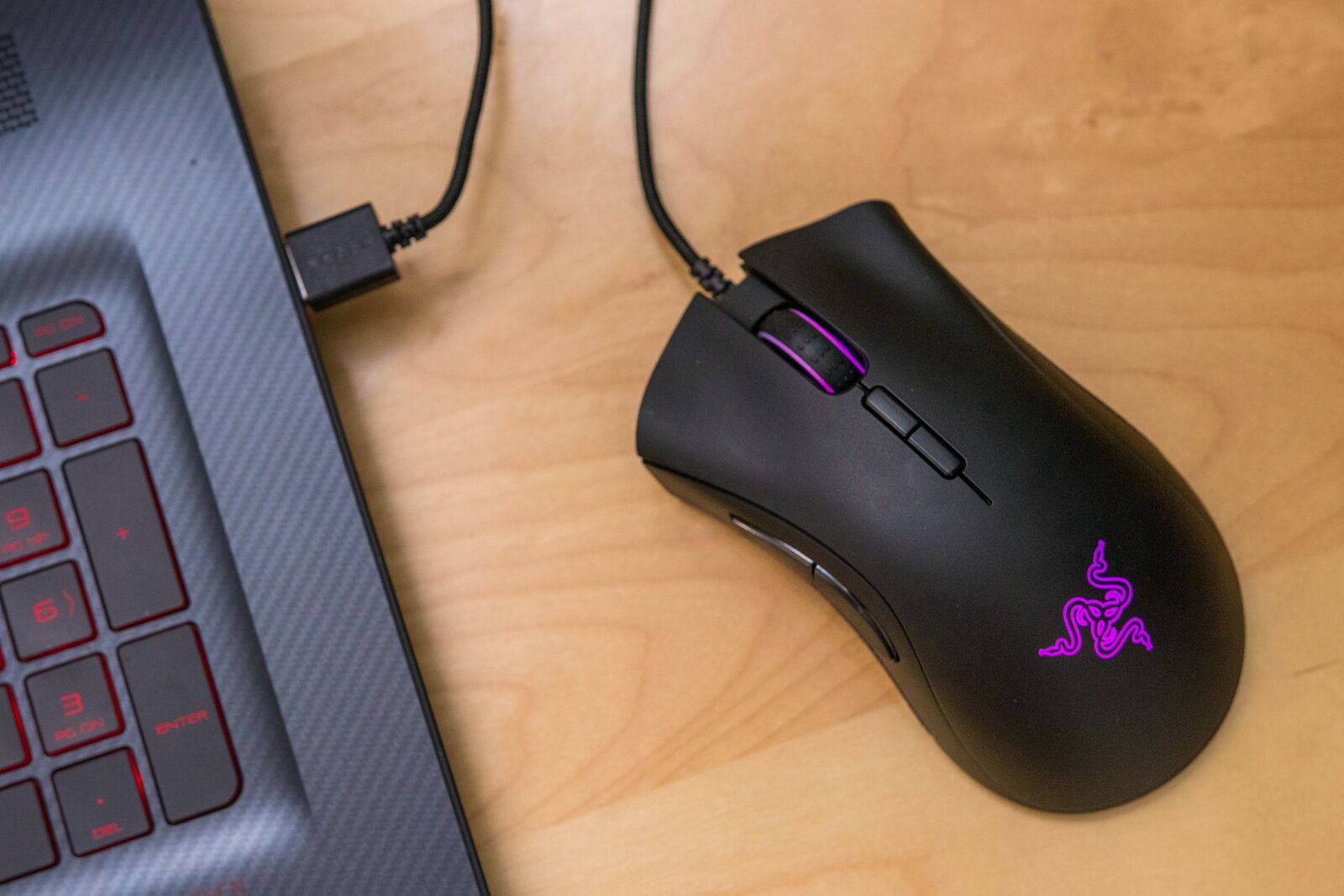
Photo: Kyle Fitzgerald
Keyboard: Razer BlackWidow Tournament Edition Chroma V2
Though we like the multicolored backlighting on the Razer BlackWidow Tournament Edition Chroma V2 (Amazon), theremore than a few reasons why this compact mechanical keyboard is our top recommendation. Its removable palm rest makes getting comfortable in different positions easier and it comes with a durable protective case.
Its learning curve isn&t as steep as competitors, so if the Chroma V2 is your first gaming keyboard it won&t be long before you get into the swing of things. You can set macros to specific keys and applications and use a variety of switch options. Like the Razer DeathAdder Elite gaming mouse, it uses Synapse software.
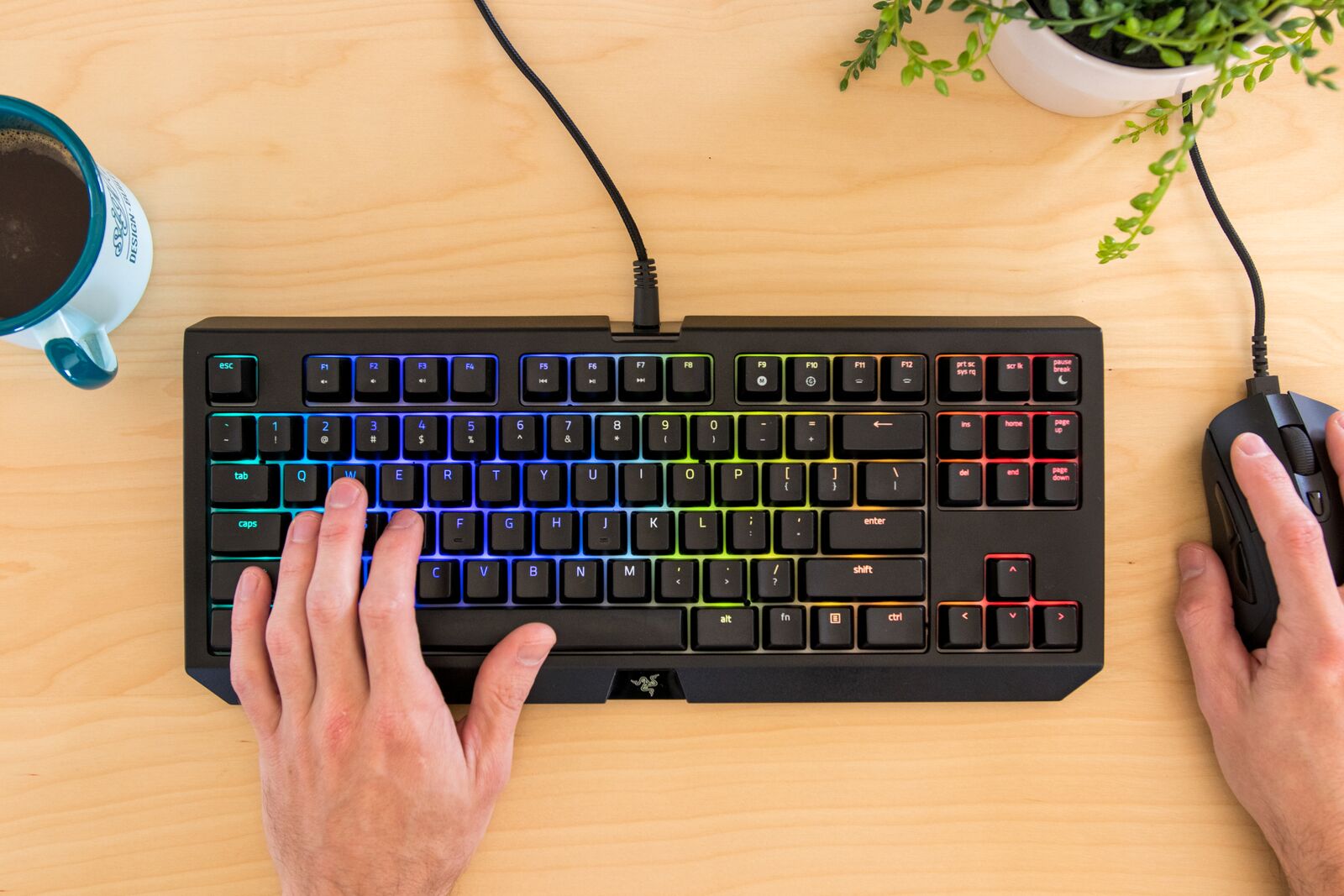
Photo: Kyle Fitzgerald
PC gaming controller: DualShock 4 Wireless Controller
Gamers who prefer playing on consoles will enjoy using a PC gaming controller with a computer. The DualShock 4 Wireless Controller (which comes with the PlayStation 4) is our top pick, because itthe most capable PC controller, as well as a few extra features: The touchpad can be used like a mouse cursor and it has an internal rechargeable battery. It connects over Bluetooth or USB and is best used with a separate gaming headset, as its audio jack doesn&t function properly with PCs.
The controller works great with Steam, though in order to get it working with MacOS or non-Steam Windows games, you&ll have to adjust some settings. We think itworth the effort for a responsive controller thatcomfortable to hold for long periods of time.

Photo: Andrew Cunningham
This guide may have been updated by Wirecutter.
Note from Wirecutter: When readers choose to buy our independently chosen editorial picks, we may earn affiliate commissions that support our work.
- Details
- Category: Technology
Read more: Gaming monitors, headsets and peripherals for a winning desktop setup
Write comment (97 Comments)French startup Tempow has raised a $4 million funding round. Balderton Capital led the round, with C4 Ventures also participating. The company has been working on improving the Bluetooth protocol to make it more versatile.
Smartphones, speakers and connected devices all use Bluetooth in one way or another. There are only a handful of Bluetooth chipset manufacturers in the world, such as Qualcomm and Broadcom. While Bluetooth chips have become incredibly efficient as they use much less power than they used to, itbeen stagnant on the software front.
Tempow is a software company that wants to rewrite the Bluetooth stack from scratch. The company started with an audio profile.
Thanks to Tempowtechnology, you can connect a phone to multiple Bluetooth speakers at once. This is just a software improvement — it works with standard Bluetooth chipsets and all Bluetooth audio devices out there.
Lenovo liked this idea and licensed the technology for its Moto X4 handset. More than 5 million devices with TempowBluetooth stack have been sold.
With todayfunding round, the startup wants to tackle more use cases. For instance, Tempow wants to optimize the pairing process, enhance the security of the protocol and work on battery consumption. &Maybe you could pay using Bluetooth instead of NFC,& co-founder and CEO Vincent Nallatamby told me.
At the same time, the startup is negotiating with multiple manufacturers. You can expect to see Tempowtechnology in more devices in the future.
The company currently has 7 patents pending and just got its first patent last week. Eventually, Tempow thinks it can build a team of Bluetooth experts who push the protocol forward.
- Details
- Category: Technology
Read more: Tempow raises $4 million to improve Bluetooth
Write comment (96 Comments)Superpedestrian, a Cambridge, Ma.-based company, has been known until now for its electric Copenhagen wheel, which a user attaches to his or her bikes and operates through an app.Itessentially a circular unit that houses a motor, a battery and sensors and is placed in the middle of the rear wheel, measuring how fast and how forcefully someone is riding and adding a little electric oomph when a bikepedals are pushed.
Riders love the wheel, but now, Superpedestrian is shifting gears. It isn&t abandoning its consumer base. Instead, ittaking the wraps off an entirely new second business that plans to use the one million kilometers of data it has amassed from Copenhagen customers to improve the offerings of urban mobility companies. More specifically, it wants to sell them hardware and software that will keep their fleets up to snuff.
It doesn&t matter if these companies are renting out electric bikes, scooter, mopeds or all three. Superpedestrian is µ vehicle& agnostic, suggests itsfounder, Assaf Biderman — who&d earlier spent 10 years working at MITSenseable City Lab. In fact, he says Superpedestrian has been quietly modeling out this business-to-business diagnostics business since nearly the companylaunch five years ago but was waiting for small motorized vehicles to gain momentum.
Now, of course, scooter and e-bike sharing services are suddenly booming. Enter Superpedestrian, which says ittime for the companies that are peppering city streets with their vehicles to improve their quality, and that Superpedestrian can help make them more reliable, easier to track, and more cost-effective over time.
Biderman is, alas, a little vague on some of the specifics. For competitive reasons, he declines to discuss how much Superpedestrian will charge for its technology or precisely how a customer like an Uber or a Spin or a Scoot would incorporate its tech into their products. He also won&t say whether Superpedestrian is already selling to any of these, or other, mobility companies already.
He is comfortable talking broadly about the sensors, embedded controllers, and software that Superpedestrian has created and protected thanks to the &dozens of patents& that the company has secured over the years, &from Japan to China to Europe to the U.S.& He suggests that what Superpedestrian has built in some ways mirrors the smarts in self-driving cars.
When a car opens in front of a rider, for example, that personnatural inclination might be to slam on the brakes, but Biderman argues they aren&t always able to do this on pedal-assist bikes, which are actuated by sensing rider pedaling but have &very limited ability when it comes to sensing what the rider is actually doing with his or her feet.&Delays in power output due to controls, or gear lag, can also prove dangerous if theexpectation is that a bike will push in synch with how the pedals are pushed. Superdestriantech gives riders more control over the bike because it ensures the power is better synchronized with pedaling motions, he says.
The technology doesn&t just protect riders. Bideman says companies that work with Superpedestrian can also better protect their products. For one thing, he says, its technology can ensure their batteries don&t overheat. (As we&ve seen with autonomous cars, laptops and mobile phones, lithium-ion batteries can, on rare occasion, catch fire and explode.)
Investors certainly like Superpedestriannew direction. The company, which employs roughly 50 people, just closed on$16.5 million in Series B1 funding expressly to introduce its products and services into the e-bike and electric scooter sharing market. Designer Tony Fadell, investing from his investment and advisory firm Future Shape, participated in the round. So did Spark Capital, General Catalyst, and Charles Kim of Extol Capital, who also serves as managing director at China Renaissance in the U.S.
The new round brings the companytotal funding to $44 million. Biderman sounds highly motivated to put it to work, too.
&Itgreat that micro mobility is becoming a reality in cities,& he says. He&d become obsessed long ago with how to squeeze more capacity out of roads, and nothing makes him happier than &one-person vehicles, because they&re occupied at 100 percent,& unlike cars that are &usually 60 to 80 percent unoccupied& and the &wrong scale as cities become more congested.&
Still, he continues, these new vehicles &need to have a different brain in them.& If he has his way, Superpedestrian will design it.
- Details
- Category: Technology
Read more: This company wants to put “brains” in electric scooters and bikes to keep riders safer
Write comment (90 Comments)Page 5298 of 5614

 8
8